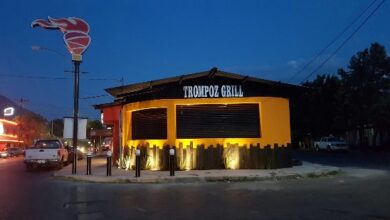Types of Sparkling Wine and How to Preserve Them: A Guide

Did you know that sparkling wine needs to go through two different fermentations?
Even though millions of people drink sparkling wine every year, there is a lot that is misunderstood about this bubbly drink. This is why it is important to know about the different types of sparkling wine and how to preserve them.
To make things easier for you, we have written a guide. Keep reading if you are interested in finding out more.
What Is Sparkling Wine?
Sparkling wine, which people also call Champagne, is a type of wine that contains bubbles and carbonation. People create it by using of a process called “secondary fermentation.”
This involves bottling wine with a small amount of sugar and yeast. As the yeast ferments the sugar, it produces carbon dioxide, which dissolves into the wine and creates bubbles.
You can make sparkling wine from many different kinds of grapes. The most popular varieties are Chardonnay, Pinot Noir, and Pinot Meunier.
It is a good idea to share a bottle of your best sparkling wine whenever you want to celebrate a special occasion.
What Is the History of Sparkling Wine?
The history of sparkling wine dates back to the early 17th century in the Champagne region of France. People believe sparkling wine was discovered by accident.
This supposedly happened when a monk named Dom Pérignon accidentally opened a bottle of wine before its fermentation process was complete. Therefore, it had bubbles in it.
The monk then discovered that these bubbles could be preserved by bottling them with a small amount of sugar and yeast.
This triggered a second fermentation. This process, known as the “Champagne method,” is still used today to produce sparkling wine.
Over time, sparkling wine became associated with royalty and luxury. It continues to be a popular and celebrated drink around the world.
How Is Sparkling Wine Made?
There are several different ways that people make sparkling wine. Here is everything that you need to know.
Méthode Traditionnelle
Méthode Traditionnelle is a traditional method for making sparkling wine that originated in the Champagne region of France. It is also known as the “Champagne method” or “méthode Champenoise.”
The process involves two fermentations: the first to convert the grape juice into alcohol, and the second to create the bubbles and carbonation.
After the first fermentation, somebody will bottle the wine with a small amount of sugar and yeast. The bottles are then sealed and stored horizontally in a cool, dark place for several months or even years.
During this time, the yeast ferments the sugar and produces carbon dioxide, which dissolves into the wine and creates bubbles.
The Charmet Method
The Charmat method, also known as the “tank method” or “méthode Charmat,” is a process for making sparkling wine.
Unlike the traditional Méthode Traditionnelle, which involves two fermentations, the Charmat method only requires one fermentation. The fermentation takes place in large tanks, rather than individual bottles.
After the fermentation is complete, the wine is bottled under pressure to preserve the bubbles.
This method is generally quicker than the Méthode Traditionnelle, but it is also less complex and can result in a less flavorful wine. The Charmat method is commonly used for Prosecco and other sparkling wines.
Using Artificial Carbonation
In some cases, sparkling wine is made using artificial carbonation, rather than the traditional method of secondary fermentation.
This process involves injecting carbon dioxide into the wine, rather than allowing it to be produced naturally by the fermentation of sugar and yeast. The wine is then bottled under pressure to preserve the bubbles.
Artificial carbonation is generally less expensive and quicker than the traditional method, but it can also result in a less complex and flavorful wine.
Some people argue that artificially carbonated sparkling wines lack the depth and character of wines made using the traditional method.
How to Preserve Sparkling Wines
There are several strategies for preserving sparkling wine, including the use of sparkling wine preservation systems. These systems are designed to keep sparkling wine fresh and bubbly for longer periods of time.
Here are some common methods you can use to preserve wine.
Vacuum Pumps
A vacuum pump is a device that removes air from the bottle, creating a vacuum seal. This prevents oxygen from entering the bottle and oxidizing the wine.
To use a vacuum pump, you simply attach the device to the top of the bottle and pump the air out. The vacuum seal will keep the wine fresh and bubbly for up to a week.
Carbon Dioxide Cartridges
Carbon dioxide cartridges are small, disposable canisters that release a burst of carbon dioxide into the bottle. This helps to displace the air inside the bottle and preserve the bubbles.
To use a carbon dioxide cartridge, you simply insert the cartridge into the bottle and press a button to release the gas. The carbon dioxide will help to keep the wine fresh and bubbly for a few days.
Pressurized dispensers
Pressurized dispensers are devices that use a small amount of gas, such as nitrogen or argon, to keep sparkling wine fresh and bubbly. The gas is injected into the bottle, creating a protective barrier around the wine.
To use a pressurized dispenser, you simply attach the device to the top of the bottle and press a button to release the gas. The pressurized dispenser will keep the wine fresh and bubbly for up to a month.
Understand the Different Types of Sparkling Wine
If you want to find out more about the different types of sparkling wine, it is important to keep in mind that every type of sparkling wine requires a different fermentation method.
If you are interested in finding out more about sparkling wine, be sure to check out the Products section of our blog.





